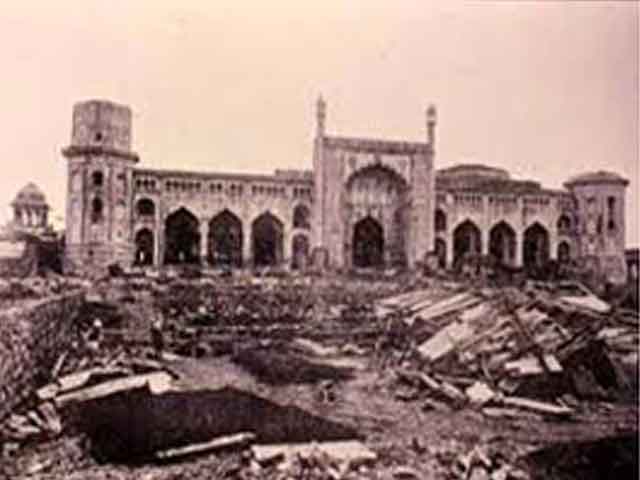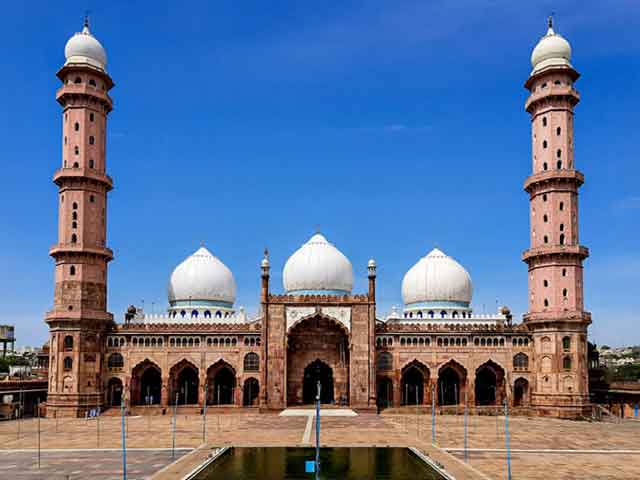Visits: 25
Founder of Tajul Masajid
Sultan Shah Jahan Begum
Sultan Shah Jahan Begum (July 30, 1838 AD- June 16, 1901 AD) was the tenth ruler of the state of Bhopal and the third Begum of Bhopal. She ruled for about 57 years in Central India’s royal princely state of Bhopal In which the reins of governance remained in his hands for 32 years.
Birth and Early Years
Shah Jahan Begum was born on Monday, Jamadi-ul-Awal 6, 1254 AH/ July 30, 1938 AD at Islamnagar Fort, Bhopal. His father was Nawab Jahangir Muhammad Khan Bahadur Bhopal. Her training as a Princess was given by Nawab Sikander Begum herself. Shah Jahan Begum inherited extraordinary intelligence, perseverance and awakening from her forefathers. Apart from her training by Sikender Begum, she was also taught various academic and religious subjects by distinguished scholars. In addition, horse riding and shooting exercises were also a part of her routine. Shah Jahan Begum completed all these stages very quickly in God-given ability and intelligence, ingenuity and passion.
Enthronement
On December 9, 1844 AD when Shah Jahan Begum’s father and Nawab of Bhopal, Nawab Jahangir Muhammad Khan Bahadur passed away to his Creator, the throne was bestowed upon the young Princess who was only 6 years old. Her mother, Nawab Sikander Begum was appointed as Deputy Ruler of the State and she held this position from December 1844 AD- October 30, 1868 AD up until her death day. When Sikander Begum also passed away, Shah Jahan Begum was crowned as Nawab Bhopal on the blessed day of Monday, Shaban 1, 1285 AH/ November 16, 1868 AD.
Marriage and Children
When Shah Jahan Begum reached 17 years of age, was young and dynamic in personality and showed immense skill as an able Princess, the search to find a suitable groom for her began. After much deliberation and consideration, Bakshi Baqi Muhammad Khan Nusrat Jung, Commander Bhopal was selected suitably who was a rich, loyal and well-cultured individual. The marriage was solemnised on July 26, 1855 AD At that time the age of Shah Jahan Begum was 17 years. The couple was blessed with a baby girl named Sultan Kekhusru Jahan Begum on Friday, July 9, 1858 AD and then another baby girl, Nawab Sulaiman Jahan Begum on November 26, 1860 AD who unfortunately, passed away at a young age of 5. Shah Jahan Begum’s husband passed away on July 26, 1867 AD.
Title of Nawab Bhopal
After her wedding on July 26, 1855 AD, Shah Jahan Begum was entitled to the throne and could be the Nawab of Bhopal but she used her thoughtfulness and wisdom, and let her mother be in charge. Hence Nawab Sikander Begum remained the Begum of Bhopal until her death and Shah Jahan Begum remained closely associated with the state affairs. After the death of Nawab Sikander Begum, Shah Jahan Begum was crowned as Nawab Bhopal and Begum Bhopal on November 16, 1868 AD at Moti Mahal Palace.
Second Marriage
Shah Jahan Begum’s first marriage was to Baqi Muhammad Khan Nusrat Jang Bahadur who had died in the year 1867 AD. In matters of governance, a reliable advisor and helper was needed and such a counsellor or helper can only be a husband. Therefore, on the advice of Madar-ul-Muham (Prime minister) of State Bhopal Maulvi Jamaluddin and the Ministers of the State, Nawab Siddique Hasan Khan was selected to be the husband of Shah Jahan Begum. The marriage happened on May 8, 1871 AD and his status was counted among the Nawabs of Bhopal.
Improvements
Shah Jahan Begum, during her reign, in the state of Bhopal, performed various duties which were assigned to her by Nawab Sikandar Begum. When Nawab Sikandar Begum went for Hajj, the Council was appointed to manage the state of Bhopal in which Shah Jahan Begum was the permanent president. When she became the Nawab Bhopal in 1968 AD, she had experience in all national and political affairs and She was naturally well-aware of her surroundings and hard working towards her state. Her knowledge and intellect was at par with the skills required in a leader. She would also accompany her mother on various trips and political meetings with eminent personalities. The unfinished tasks that remained during the last years of Nawab Sikander Begum were completed by Shah Jahan Begum herself. She made modern reforms, visited each district several times and pardoned many taxes. Existing laws were amended for good and these brought modernity to the state. She formed a council named ‘Tanzeemaat-e-Shahjahani’ for establishing a reformed tax system for the state. The judiciary was improved and safety measures were undertaken for the protection of the state and its people. She also took care of the health of her subjects by administering a Government doctor in every district and construction of Health Clinics appropriately. She ensured that there was a General Health Centre for the public and an exclusive Health Centre for the Ladies. Special attention was given for the care of mothers and babies. She initiated the vaccination for small-pox and encouraged a reward system for those who get the vaccine. This encouraged the people to get the vaccine while also improving the health of the people of the state. To assure people of the benefits of the vaccine, she administered the first vaccine to her own grand-daughter Bilqees Jahan Begum. She built a hospital for lepers in Sehore. The Sulaimaniyah Madrasa, which was built in the memory of late Nawab Sulaiman Jahan Begum, was developed and affiliated to the university after high school. She established Jahangiria Madrasa in the name of her father in which only the teaching of Holy Quran was given. In the memory of Bilqees Jahan, her grand-daughter, Shah Jahan Begum established Bilqisiya Madarsa for the destitute and orphans.
Religious Services
A modern department of religious affairs was established in the state. Lakhs of rupees were spent for restoration of the mosques of the city. In every mosque in the state, imams and muezzins were appointed who were responsible for arranging the five daily prayers and sweepers were arranged for the mosque’s cleanliness. Arrangements were made for light at the mosque and special attention was given to procure firewood for warm water during winters. A department called the Superintendent of Mosques was also established to oversee all mosques in the city and staff was appointed for the same. During the reign of Nawab Sikandar Jahan Begum, aid to the poor of the two holy shrines was extended and a permanent department was set up to manage it, and a caravan began to go on Hajj every year at the government’s expense.
Publication of Religious Books
Shah Jahan Begum was appreciative of knowledge, she showed such generosity in her scholarly works that she left behind all the Begums of Bhopal. A department called Shahjahani Press was established in which the Quran Majeed was printed and this Quran Majid was distributed among the people as a gift. She published rare books such as Nail-ul-Awtar, Fathul-Bayan, Tafsir Ibn Kaseer, Rawdat-un-Nadiyya, Nuzul-ul-Abrar, Jala-ul-Ainain, Fathul-Bari, Explanation of Sahih-ul-Bukhari and a lot of money was spent on it Fathul-Bari was first published by Shahjahani Press. She was also the Patron of educational Scientific Society, Aligarh.
Construction
Shah Jahan Begum is one of the ruling women of Bhopal State who also promoted architecture and initiated several masterpieces. The biggest achievement of in her construction regime is the largest mosque in Asia, the Tajul Masajid in Bhopal. She also helmed the building of Shah Jahani Mosque in London, England which was the first official shrine built at the expense of Nawab Shah Jahan Begum. One of her buildings is the Taj Mahal of Bhopal which was also her residence.
Authorary Works
Shah Jahan Begum was also a writer. Her famous works include Tahzeeb-e-Niswan, Khazinat-ul-Lugaat. She also wrote poetry in which Tajwar and Shireen were pseudonyms. She used to recite poetry in Persian “Masnavi Sidkul Bayan, Tajul Kalam and Deewane Shireen” are her memories.
Death
In the month of October 1900 AD, Shah Jahan Begum was diagnosed with Oral Cancer which appeared in her left cheek. She suffered this evil disease for about eleven months and then eventually succumbed to it. On Sunday, Safar 28, 1319 AH/ June 16, 1901 AD, she passed away aged 62. She was buried at Bagh Nishat Afza at 4 pm leaving a royal legacy behind which will always be remembered and cherished.




